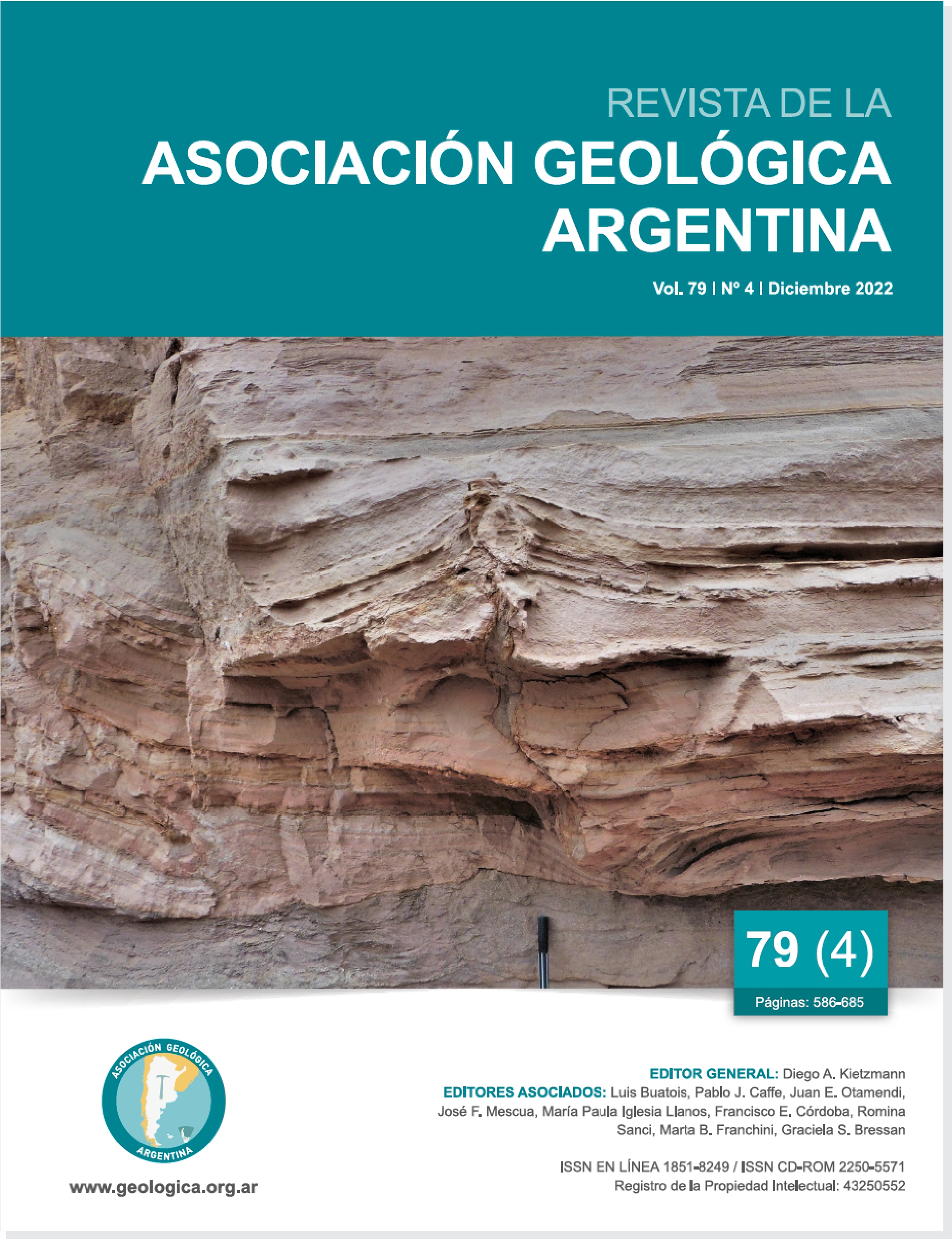Characterization and structural evolution of the Auca Mahuida volcanic field, Neuquén.
Main Article Content
Abstract
By means of the analysis of topographic data and volcanic rock thicknesses, it was possible to prove that the Auca Mahuida volcanic field lies on a domed structure of similar diameter. The absence of the Malargüe Group (Campanian-Danian) below most of this massif, along with the presence of an erosive angular unconformity which separates the Cretaceous layers of the Neuquén Group from the Quaternary volcanic rocks, are a sign that this dome was raised and partially eroded before the Pleistocene volcanic activity. It is probable that this structure is due to a thermal uplift caused by the emplacement of magma chambers in depth and shallower igneous intrusive bodies during the Pliocene-Pleistocene. Furthermore, the presence of a slight regional slope towards the east-northeast was recognized in the study area, which explains the exiguous topographic asymmetry of the Auca Mahuida shield volcano and the larger spread of the basaltic flows on its eastern flank.
Article Details

This work is licensed under a Creative Commons Attribution-NonCommercial 4.0 International License.
Nota de copyright
Los autores conservan los derechos de autor y garantizan a la revista el derecho de ser la primera publicación del trabajo licenciado según una licencia de atribución Creative Commons que permite a otros compartir el trabajo con el reconocimiento de la autoría y de la publicación en la que se publicó por primera vez.
Declaración de privacidad
Los nombres y direcciones de correo electrónico introducidos en esta revista se usarán exclusivamente para los fines declarados por esta revista y no estarán disponibles para ningún otro propósito u otra persona.

